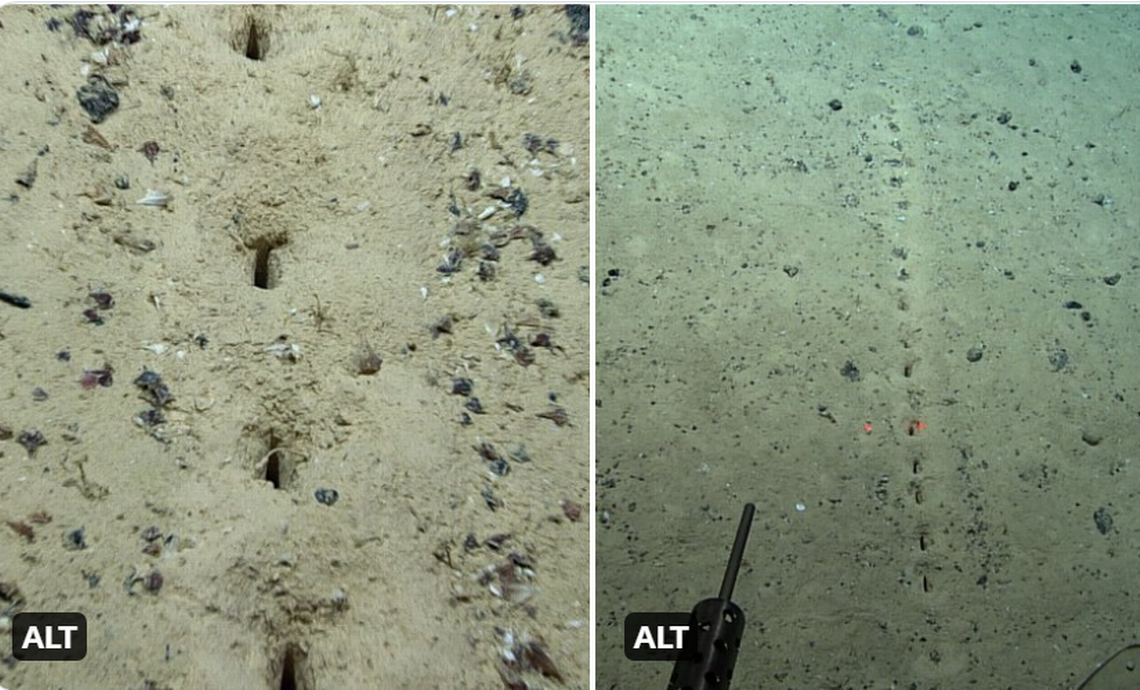‘They look almost human made.’ NOAA finds weird lines of holes in Mid-Atlantic floor

Scientists exploring a submerged mountain range in the Mid-Atlantic stumbled onto something they can’t explain: An organized series of holes punched in the floor of the Atlantic Ocean.
The discovery was made Saturday, July 23, and photos show the dots connect into nearly straight lines ... or trails ... or designs.
NOAA Ocean Exploration isn’t yet sure how to explain it.
“We observed several of these sublinear sets of holes in the sediment. These holes have been previously reported from the region, but their origin remains a mystery,” NOAA Ocean Exploration reported.
“While they look almost human made, the little piles of sediment around the holes make them seem like they were excavated by ... something.”
The July 23 dive reached depths of 1.7 miles while visiting the summit of an underwater volcano north of the Azores. A remotely operated camera was used to safely record the discoveries.
NOAA posted photos that show the holes were found in what is otherwise a flat sandy surface.
Scientists invited the public to offer theories, but commenters have raised more questions, including some who wondered if the holes were made by someone taking core samples.
“Is that an object or animal inside the holes? Does that line run in the same direction as the current?” Anthony Narehood asked.
“Water from underground springs?” Mike Weathersby posted.
“What about gas methane?” Eduardo Pogorelsky said.
The discovery was made as part of the Voyage to the Ridge 2022 expedition, which is exploring and mapping the “poorly understood deepwater areas of the Charlie-Gibbs Fracture Zone, Mid-Atlantic Ridge, and Azores Plateau.”
The Mid-Atlantic Ridge stretches 10,000 miles from north to south, and is considered “the longest mountain range in the world and one of the most prominent geological features on Earth,” NOAA Ocean Exploration says.
“The majority of it sits underwater and thus much of it remains largely unexplored. With active tectonic spreading, the MAR is the site of frequent earthquakes,” NOAA reports.
“Hydrothermal vents may form where magma provides heat as it rises to the seafloor. These vents are known to support diverse chemosynthetic communities. However, little is known about life at these sites once vents go extinct, or what life lies beyond the vents, further away from the rift zone.”
Graveyard of B-29 bombers is hidden under Western Pacific and NOAA intends to find it
Ship lost in 1943 after deadly U-boat strike may have been found off South Carolina
1836 shipwreck reveals Black and Native American crews played a key role in whaling
